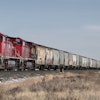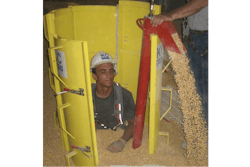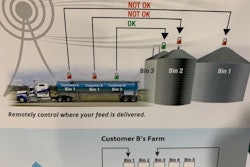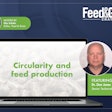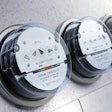Transcription of Feed & Grain Chat withDr. Steve Krause, senior brand evangelist,SenesTech.
Elise Schafer, editor of Feed & Grain:Welcome toFeed & Grain Chat. I'm your host Elise Schafer, editor ofFeed & Grainmagazine.
This edition ofFeed & Grain Chatis brought to you by WATT Global media and Feedandgrain.com. Feedandgrain.com is your source for the latest news, product and equipment information for the grain handling and feed manufacturing industries.
Today I'm joined on Zoom by Dr. Steve Krause, senior brand evangelists for SenesTech. Steve's here to discuss how to keep rodents and their offspring from becoming a big problem at feed and grain facilities. Hi, Steve, how are you today?
Dr. Steve Krause, senior brand evangelists for SenesTech:Fine, Elise. Thank you. How are you?
Schafer:Doing well. Thanks for being here with me today. Tell me about your background in the ag industry and what drew you to pest control.
Krause:I've spent about 20 years in the ag industry, primarily as a pest control specialist. I'm trained formally as a field biologist and ecologist and as an entomologist, I became interested in the role insects play in our food resources, our diseases that we all face, and impacts those pests have on just humans and society in general.
来支付我的大学,我是一个虫害控制technician for a company and that's where I gained a lot of exposure to other pests and into insects. And those were rodents in particular mice and rats were the were the two main pests that we dealt with, so from that background, I just became interested in the role that all sorts of pests play in what we're trying to do here, not just in the United States, but beyond.
And from there, I took it into a professional career, where I was involved from the research side as a research scientist, all the way through operations management, and then in the field to help guide deployment or use of pest control tools and practices to control insects and rodents and have been doing this for over 20 years.
Schafer:So now that you're using your expertise to focus on rodents, what is different, or similar perhaps, about controlling rat populations versus insect pests?
Krause:Let's just start with some of the similarities. So the way that most of us think about pest control, we think about how do we get rid of the problem. And as a resident or homeowner or somebody at your facility, they think ‘how can I quickly do this?’ And in some cases, if you have a lone insect or a lone mouse or a lone pest issue, you might take care of the problem yourself, or you may call a local service provider to handle it more professionally, Those tools often are lethal tools or ways to sort of get rid of or shield the target pest as quickly as you can.
但是在其他情况下,只是一个intervention is needed. So the main similarity between controlling both insects and rodents is something we call integrated pest management or IPM. And this is a practice that's been around, probably informally forever, but more formally -- from the USDA -- since about the 1950s. And the whole idea behind an integrated approach to controlling insects or rodents is to consider all the different tools, processes to actually control the targeted pest.
So these could include pesticide type products, sanitation practices, to keep your facilities clean, exclusion practices to make sure there aren't any holes or openings between you and the local corn crib or another problem with your pest, etc. And then the actual use of those tools, the deployment of the tools is really site specific, so if you have a very large granary, or very large apartment complex or home vs. something much smaller or isolated, your selection of those tools within the IPM portfolio will vary quite a bit. So there similar in that respect.
One of the main differences, though, between controlling insects and rodents is that rodents in this case -- we're talking about two species of rats -- and the common mouse, Field Mouse, is that the rodents are extremely bright, believe it or not. They have small brains, but they're really smart in what they're able to do to adapt to our conditions. So those rodent pests are called, they're called commensal, which all that means is that they're used to sharing the resources that we have. In other words, their success is based on human success, so where we've established cities or established large grain mills, or areas where you have a lot of food, concentrated water habitat, you're going to find these rodent pests.
And secondly, they're very suspicious, especially rats, of their environment. So if you go out and try and do something new to the environment, they're not just going to sit around and say, ‘Oh, this is fine with me.’ They actually think about what is happening in their surrounding world, which makes controlling rodents all the more of a challenge.
Schafer:That's very interesting. Now, we know rodents exists across the United States, but are there any regions or times of year that they tend to flourish?
Krause:You're right, they do exist across the United States -- they're found in every state. In every type of habitat you can imagine, except water -- they're not really aquatic, the commensal organisms we're talking about. But in general, you'll have them 12 months out of the year, so let me just start with for those millers or grain elevators, or ag managers, or people in general. If you've never had a rodent pest, and suddenly you do, it was likely introduced on some sort of imported product or somehow transported there.
Best objective is to just get rid of it as soon as you can. But many of these larger facilities and mills and granaries have persistent rodent problems 12 months out of the year. That's because those populations are long established at the facility -- they're there, they're managed using different techniques.
On top of all of that, though, you have a little bit of temperate or weather impacting the distribution or the presence of these rodents. So, for example, if your facility is near where you have crops that are harvested, then around harvest time, we tend to see an influx or an increase in rodent pressure at the facility or the mill of the granary. And that's primarily because they harvest the crop from the field. The rodents are that are out there scurrying for safe haven, they'll often come into your granary facility, they come into your farms, your barn facilities, etc., so we do see a bit of a spike up in the fall at harvest time.
Also, in areas where you just have cooler temperatures setting in even post-harvest, it'll drive more and more of those pests inside because rodents, these are mammals. In fact, of all the mammals out there, rodents occupied 50% of those. There are about 2,000 species of rodents. We're only talking about three that are major pests to grain and elevator operators and feed mills, etc. But they are warm blooded, so if it's getting cold outside, they're coming inside or looking for some warmth. So, they're everywhere, but there are a few areas where they do peak based on a seasonality, in particular in harvest practices.
Schafer:Steve, what are some examples of damage or losses you'd expect to see at a feed or grain facility with a rodent problem.
Krause: So the way to think about damage is just to think about the animal in particular. And if you think about just what a rodent is, or what it does, it quickly points to the damage that can cause. So rodents are basically designed to gnaw. They have to continually bite or gnaw down.
So the rodents you might be familiar with outside of the pest world, such as beavers and gerbils, chinchillas -- a lot of those animals, they all have to keep on chewing and that wears down their teeth. And if you think of a beaver chewing on a tree, they're doing that because they have to and if they didn't, their incisors would keep growing and would grow into their jaw and it would become a pretty gruesome event.
But because of that, rats and mice are just gnawers by definition, so in doing so they damage your building structure, chew through holes, chew through equipment that can disrupt the equipment's functioning. One area of real concern from a chewing perspective is when they get into electrical boxes or get around wires. Many of the fires you might read about in urban or big cities, for example, are often linked to rat chewing on the wires in these older buildings. You don't hear about that, but they do cause a lot of fire risk to larger facilities.
So they chew all the time. In chewing they're also consuming food. About 20% globally of the stored grains are lost to rats and mice consuming the food directly for ingestion. While they do that, they also pose another threat to the to the mill operator or grain elevator operator through disease transmission. In the ag value chain, in particular, biosecurity to keep our food supply safe is a major initiative for all operators that have to have biosecurity plans in place, have pest control as part of their operation to prevent some of these pathogens, transmitted by rodents, from reaching the food chain and then ultimately the consumer. Things like Salmonella is a major concern for people in the ag industry.
So they directly destroy infrastructure of buildings, all buildings. They pose a significant risk to fire and damage beyond just individual building that directly consume food. They also can transmit or pass on pathogens, creating a whole host of issues from a health perspective.
And they also as well are a bit of a concern for a lot of workers. So a lot of workers who are used to seeing one or two to mice or rats here or there aren't pleased to see that and we've got a real problem. It can become quite a distraction and I've been in facilities where you have a lot of rodents running around -- and they are a distraction. And when you're distracted by a pest, in this case of rodent, you're not focused on your job.
So human safety, worker safety becomes touched by rodent infestation. So they can cause a direct impact, economic impact to the miller or the grain elevator operator. It also has an impact on the workers and food biosecurity, so they touch many different parts of the chain affected by the grain and feed industry.
Schafer:So how important is the sanitation of a facility in preventing rat infestation?
Krause:It's critical. It's just critical. If you think about the best way to control any problem, disease transmission, in your home, for example -- you sanitize, you wipe down surfaces, you try and keep it clean. So sanitation in a facility is extremely important.
You know, clearly there's a lot of food present for the rodents to consume, but if you have any food or waste or products freely available to them, then it's just basically a free meal for them to come and consume. So No. 1, sanitation is extremely important.
And similarly exclusion -- or protecting your building from infestations outside the building from getting in, is really important. So both exclusion and sanitation are considered preventative methods. So do the best you can with exclusion, do the best you can with sanitation. And despite those best efforts, these critters are really adept at getting through and getting in and causing some issues there.
Like I mentioned earlier, they're very bright, they can squeeze through very small holes, very small cracks and crevices and literally weasel their way inside facilities. But it all starts with how well you keep your facility clean and up-to-date through a constructive process.
Schafer:Now, what are some other ways that you can control a population or prevent it from becoming a problem in the first place?
Krause:预防,正如我们讨论的,是基础on excluding them from penetrating your facility, and then also from providing extra foodstuffs through sanitation. In addition though, you'll have the times when you do have the rodent that becomes established and if it becomes established as a population, that's when you have to really take a look at other tools to remove or suppress the ability of that rodent to become a real problem.
So traditionally, the use of different types of traps, snap traps, live traps to basically take individual animals out, or the deployment of rodenticides, which is a EPA registered and regulated pesticide, these are essentially poisons that are placed out in plastic boxes around the perimeter and inside of buildings. Those approaches have been around for well over 60 years. Many of the rodenticides on the market have been around for quite some time. They can be very effective at controlling individuals present in your facility and in some cases might be all that you need.
But in many other cases, what we see is a quick rebound following the application of some lethal tools because rodents have a very high reproductive rate. So not to get too much into their biology, but if you only have a couple of rats -- literally two rats -- that survive your practice, those two rats will turn into about 15,000 or more within one year's time. So what researchers have been doing in the small mammal or rodent pest control world is they're following what the insect control people have been doing for a while, which is other tools besides lethal methods to control the pest.
And that's where fertility management, or the case of insect control, sterilization tools have become really, really popular. So just to pivot back to insects for just a second, they use fertility management to control major insect pests like fruit flies, for example, on mosquitoes. Globally mosquitoes are controlled using different types of fertility management tools, be they genetic, sterilization etc.
And same with screw worms, which are big pests of cattle in the United States. So the idea to try and manage the fertility or the ability of these survivors to populate up has been brought into the small mammal pest control world – rat, mouse control world. I think long term, it's a tool that is here now and it will be an ever-present part of the IPM program in those facilities where you have a need for things beyond just traditional exclusion and sanitation and legal means. Fertility management will be a terrific tool for quite a few in the industry going forward.
Schafer:Great, well you mentioned this term earlier, but can you just explain what is an integrated pest management program and the benefits for a grain facility?
Krause:That's an excellent question. So integrated pest management, I think, has been mis-defined historically. But all integrated pest management means is that you consider all your options available for your particular need. So that's step one.
Now in considering all your different options, you might only select to use one tool, or one practice for control. So for example, in controlling rats or mice in a grain elevator, you might consider all the options and decide, hey, all I have to do is really repair my facility to exclude it from entering and then I'm good to go. Often, that's not quite the case and you might need to do other things. You might need to have some supplemental pesticides applied, but IPM is a consideration of all the tools.
Like for example, in the rodent control world, similar to the insect control world, fertility management is becoming an important tool available for IPM program managers. The EPA, for example, has registered a product for fertility control of rats. It's showing great success in many different environments and this particular product is called ContraPest. And ContraPest immediately reduces the female and male rats’ ability to have offspring.
We've shown some great results in ag settings and municipalities and elsewhere in using this, again, on a site-specific and as needed basis to help supplement your ability to control your rodents. So I think considering fertility management, using ContraPest would be an important tool for any IPM manager.
Schafer:Thank you, Steve, for your insights into pest management and new ways to control rodent populations. If you'd like more information about what you learned today, visitwww.senestech.com.
That's all for this edition of Feed & Grain Chat. Thank you, everyone, for watching and we'll see you next time!
Pest controlis a main objective for grain and feed facility managers, as insect and rodent infestations cause product shrinkage, pose biosecurity risks and can threatenworker safety. It only takes a few rodents to spawn an army of unwanted tenants, but practices like sanitation, exclusion and now fertility control can contribute to an Integrated Pest Management program targeted at rats.
In this Feed & Grain Chat, Dr. Steve Krause,SenesTech, discusses the rodent behaviors and characteristics that make infestations so challenging to address and a solution for preventing their ability to have offspring.




